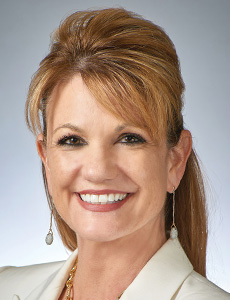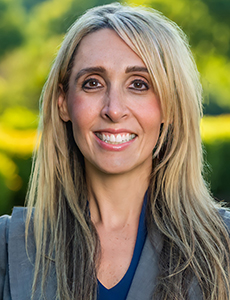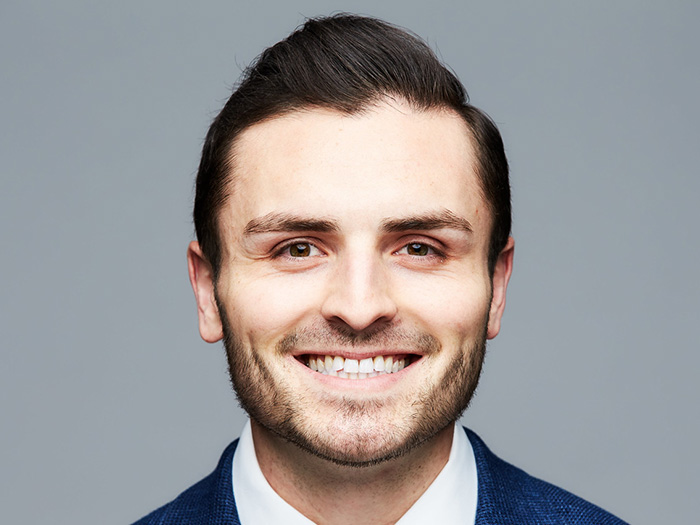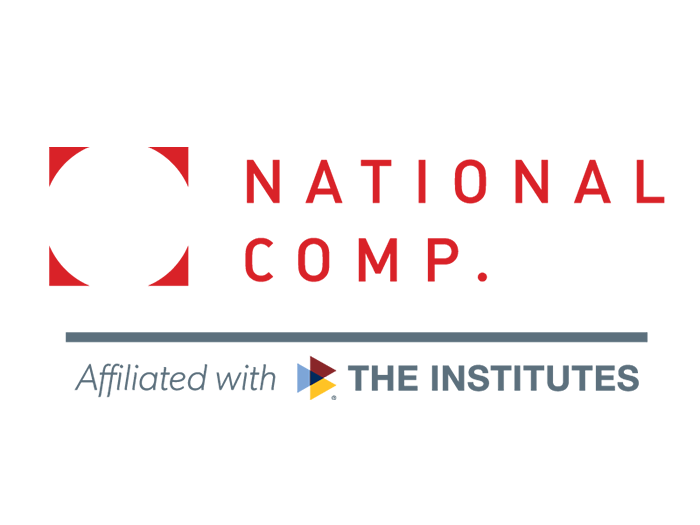Why Nurse Case Managers Are the Perfect Champions for the Biopsychosocial Model in Workers’ Comp

The biopsychosocial model of patient care is a holistic or “whole patient” approach that involves the social, psychological and broader biological aspects of a patient’s life in the care of a specific injury or illness.
The model has been an increasingly important aspect of medical care since the late 1970s and more recently has been making inroads in the workers’ compensation space.
“In order to get the best possible outcome, you need to consider the physical manifestation of the injury, the psychological components that can overlay that, and the social characteristics that also can influence outcomes, as well,” said Frank Radack, vice president of managed care at Liberty Mutual.
There can be considerable overlap between the biological, social and psychological factors, which might include biological elements as genetics, age, infections, trauma, diet and sleep habits; elements such as eating habits, exercise and smoking; as well as social support systems and logistical factors like the ability to get to physical therapy or other appointments; and psychological elements like depression or feelings of helplessness, hopelessness or anger.
Resistance and Acceptance
Until fairly recently, there has been some resistance to the model in the workers’ comp space.
“Historically in workers’ compensation, payers have focused their attention on the main injury or source of pain and have avoided discussions around patient feelings or emotional wellbeing,” said Linda Lane, managing director of complex network solutions at One Call.

Linda Lane, managing director of complex network solutions, One Call
“This perspective largely stemmed from fear that they would be responsible for both the physical injury and components of a psych claim.
The industry has since evolved and has begun to acknowledge the correlation between mind and body, however, recognizing both factors can influence a patient’s recovery outcome.
According to Lane, the delay in implementation is not surprising.
“Generally in health care, workers’ compensation seems to be six to eight years behind in terms of an adoption curve, whether it’s a methodology or a change in technology and treatment,” she said.
“Oftentimes there are cost barriers that don’t exist on the group side, but where it’s one hundred percent covered on the comp side, you’ll find some of those barriers exist.”
That is not to say there haven’t been early adopters.
Karen Thomas is the director of case management innovation at CorVel, a national provider of risk management solutions that has been using the biopsychosocial model since its founding in the late 1980s.
“Worker’s compensation, historically, has been focused on claim mitigation and denying of injuries,” said Thomas.
“Our approach has been much more to acknowledge the human factor in work injuries. We want to be sure that we’re treating the whole body as it relates to the work injury.”
In recent years, more players in the workers’ comp space have begun to catch up.
“I’ve been doing workers’ comp for 21 years, and I have seen a big increase in [use of the biopsychosocial model] in probably the last 10,” said Ruth Williams, telephonic case manager supervisor at Coventry.
“I definitely have seen a rise of that in the workers’ comp arena.”
Application of the model involves a combination of the high-tech and the very human, as well, beginning with a positive and personal approach.
“You won’t hear us refer to injured workers as ‘claimants,’ ” said Radack.
“We’ve taken a purposeful approach to changing our language, so we’re not going to ‘investigate your claim.’ We’re going to ‘review information with you.’ ”
Nurse Case Managers Can Lead
There is also an increased reliance on nurse case managers to back and implement this new model.
“Nurses have always had a deeper sense of how to connect with the patient and understand the other factors with an illness or an injury,” said Melissa Burke, vice president and head of managed care and clinical at AmTrust Financial.
“And some of that is strongly used in the biopsychosocial model,” she continued, “just a nurse’s natural ability to provide empathy, compassion and to drive the empowerment and accountability in a patient … they’re naturally part of how a nurse interacts with a patient or injured employee.”
Thomas agreed.
“As nurses, we’re going to treat the whole body and mind,” she said.
“We know that just because you have a fractured ankle, we can’t just solely focus on that bone. There are many other factors that play into recovering from that injury. So we have to look at comorbidities and lifestyle and how mental health might impact recovery, what’s going on in your environment and your support systems. And our nurses certainly assess all those things and then collaborate with our claim professionals to address them.”
Special questionnaires and interview techniques like using open-ended questions encourage patients to open up about factors in their lives that may, however indirectly, impact their recovery.
“[Nurses] take the time to listen to the patient,” said Burke. “Hear them out, because more often than not, they will tell you the complete story if you allow them.”
Training in effective interview techniques is also essential.
“At Coventry, when the case managers come on board, they’re trained in a cognitive behavioral approach called L.A.S.E.R.,” said Williams.
This stands for Locate the resistance; Active listening; Selective reinforcement; Empower change; and Remove barriers.
“In order to get the best possible outcome, you need to consider the physical manifestation of the injury, the psychological components that can overlay that, and the social characteristics that also can influence outcomes, as well.” — Frank Radack, vice president of managed care, Liberty Mutual
“And we also have motivational interviewing training,” added Williams.
Such questioning is not just about obtaining information.
“When we use the psychosocial model, we’re creating a buy-in that makes the injured employee feel like, number one, they’re being listened to. Number two, they’re being understood,” said Jennifer Newman, Georgia case management supervisor at Genex.
Tech’s Role in Successful Nurse Case Management
The tech side builds on this human connection, as OCR, AI and machine learning help providers analyze the interviews.
“We have built intelligence into our proprietary systems where we’re capturing injured workers’ beliefs, attitudes, certain components related to their belief of recovery, environmental factors,” said Thomas.
“So we have the data that each of those nursing touches are capturing and building intelligence into our system to help alert our clinical team and our claim professionals [on] how they can get ahead of these issues before they become issues.”
“We have what we call ‘confounding factors’ that are also interjected into that diagnosis, and it calculates the return-to-work time frame,” said Williams. “These factors may actually prolong it, depending on comorbidities, such as smoking obesity, depression, things like that.”
“We put this into the system, and it actually changes the date of when the claimant is expected to return to work, because of the issues and complications that can happen just by having the chronic disease in the healing process,” said Newman. “This is something that applies instantly.”
Such analysis can be crucial in the early detection of attitudes or mental or emotional states that can hinder recovery.
“Our system looks for keywords that identify someone exhibiting negative or catastrophizing thoughts. We then flag those words or phrases and notify the claims or nurse case management team to review,” said Lane.

Melissa Burke, vice president, managed care and clinical, AmTrust Financial
“We leverage both technology and human intervention to proactively identify at-risk claims to minimize delays in recovery.”
Catastrophization is when patients lose hope or agency in their own recovery. It can be devastating to the patient and costly to the payer.
“The psychological component of the recovery journey is an important aspect to consider, because if an injured worker is only focusing on their current limited state, it could cannibalize their outlook for future long-term recovery,” said Lane.
Radack points out that the same injury could be viewed by some as the end of their working life and by others as a minor setback.
“Those two differences in philosophy can really drive different outcomes in the claim. And that’s why it’s so important to really have the tools and awareness of the difference in perception of situations and how they impact the claim,” he said.
Other technologies are also helpful.
CorVel partnered with PeerWell to create an app that “enables the injured worker to be interacting daily to assess anxiety, pain, making sure that their environment is safe, ensuring nutrition is addressed in the recovery of these injuries,” said Thomas.
“I think technology is going to play in this area in a lot of different ways,” added Burke.
“First, certainly behavioral health telemedicine and cognitive behavioral therapy. But I also think we’ll see tools like virtual reality, even gamification in this space, where we’ll really rely on technology to connect with individuals.”
Taking a Note from Health Care
While the biopsychosocial model is somewhat new in the workers’ comp space, there is plenty of data on its efficacy from the broader health care space.
“There are many studies in the medical field that show utilizing a patient engagement model and addressing the whole patient will bring a decrease in litigation and improvement in adherence and compliance with medical treatment,” said Burke.
“And we do see in comp that with the use of nurses, we do see a decrease in medical costs, a decrease in litigation and an earlier return-to-work.”
And we are starting to see data from the workers’ comp space, too.
“Research is beginning to show that when both the physical and emotional aspects of an injury aren’t addressed in tandem, it can result in a longer claim lifecycle and increased associated costs,” said Lane. &










